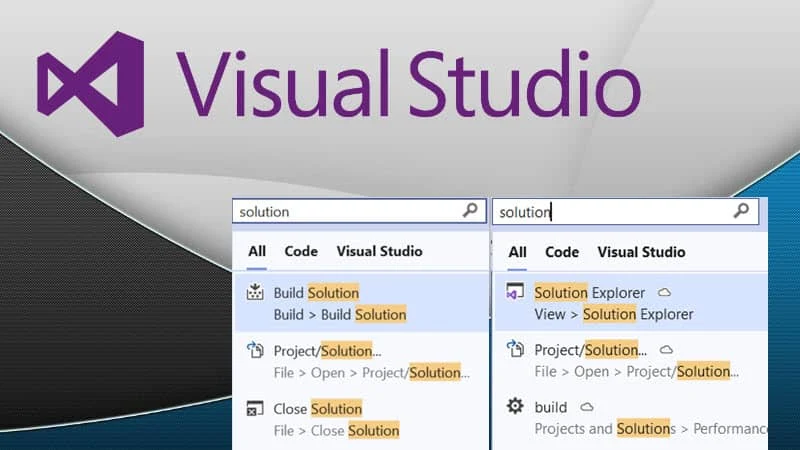📢 Visual Studio 2019 adds AI-powered Visual Studio Search service
Microsoft adds AI/ML powered search service to Visual Studio 2019 version 16.9, which was released during Ignite conference in March 2021.- Story published by Kunal Chowdhury on .
Microsoft adds AI/ML powered search service to Visual Studio 2019 version 16.9, which was released during Ignite conference in March 2021.- Story published by Kunal Chowdhury on .
Recently Microsoft releases Visual Studio 2019 version 16.9, which brings a set of new .NET productivity features, improvements to the IDE, remote debugging improvements, and more. With this release, Microsoft also adds an AI-powered Visual Studio Search service.
This feature has been integrated into the shortcut CTRL + Q for intelligent Visual Studio feature searches. Continue reading further to know more about this feature.

With the release of Visual Studio 2019 version 16.0, Microsoft introduced Visual Studio Search shortcut (CTRL + Q) as a Quick Launch for Visual Studio feature searches. Later, with version 16.3, Microsoft expanded it to support code searches.
But, there was still a lack of features due to few limitations. Over time the company explored a solution to build the Visual Studio Search service based on Artificial Intelligence (AI) / Machine Learning (MI) powered by Azure Services.
With the release of Microsoft Visual Studio 2019 version 16.9, this has been now integrated into the Visual Studio IDE.
When a user types in a search query in the Visual Studio Search box, the VS client sends the request to the feature search service. This request then goes through the Azure Front Door which routes the call into the nearest region for the REST API endpoints.
The REST API app receives that search request, checks for the search result in the local cache and/or in the Redis cache. If the cache is not available, it retrieves the results from one of the indexes in the Azure Search service and caches it for faster retrieval in the future.
The top results are then compared to the contextual ranking data if it finds any open project or detects if Visual Studio is running in debug mode. The top-ranked results are then returned to the user.
To achieve production-level performance, scalability, geo-redundancy, and reliability, manage potential service throttling, and monitor service health, the system is plugged into our well-tested AI service infrastructure, which supports our service’s development, staging, and deployments with Azure DevOps and Azure Resource Manager templates with consistency.
, Microsoft said in a blog post.
Thank you for visiting our website!
We value your engagement and would love to hear your thoughts. Don't forget to leave a comment below to share your feedback, opinions, or questions.
We believe in fostering an interactive and inclusive community, and your comments play a crucial role in creating that environment.